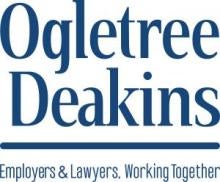Senate confirmation of David Keeling, President Donald Trump’s nominee to serve as the assistant secretary of labor for occupational safety and health, began on June 6, 2025. The testimony, given during the first week of his nomination process, focused on his qualifications, professional background, and vision for the role to which he was nominated.
He began by outlining his educational credentials and relevant work experience, emphasizing his expertise in his field and his commitment to public service. Keeling addressed key issues pertinent to the position, such as ethical standards, transparency, and the importance of upholding the law or regulations associated with the office.
Quick Hits
- Senate confirmation hearings for David Keeling, President Trump’s nominee for assistant secretary of labor for occupational safety and health, began on June 6, 2025, focusing on his qualifications and vision for the role.
- Keeling emphasized ethical standards, transparency, and regulatory compliance during his U.S. Senate testimony, proposing strategies to enhance efficiency and stakeholder engagement.
- Keeling highlighted the potential of leveraging technology to streamline Occupational Safety and Health Administration (OSHA) operations, improve data management, and enhance service delivery amidst plans to downsize the agency.
Keeling responded to questions from senators regarding his past decisions, his approach to problem-solving, and how he would handle potential conflicts of interest. Keeling assured the committee of his impartiality and dedication to fairness. He also discussed specific policy areas or challenges relevant to the position, offering thoughtful insights and potential strategies for improvement.
Keeling addressed several policy areas and challenges relevant to the position for which he was nominated. These included:
- Ethical standards and transparency: Keeling highlighted the ongoing challenge of maintaining high ethical standards within the office. He acknowledged the importance of transparency in decision-making processes and the need to build public trust.
- Regulatory compliance: He discussed the complexities of ensuring compliance with existing laws and regulations, particularly in areas where regulations are evolving or subject to interpretation.
- Resource allocation and efficiency: Keeling identified the challenge of managing limited resources while striving to maximize efficiency and effectiveness in the office’s operations.
- Stakeholder engagement: He recognized the importance of engaging with a diverse range of stakeholders, including the public, industry representatives, and other government agencies, to ensure that policies are well-informed and balanced.
To address these challenges, Keeling proposed several strategies:
- Strengthening internal oversight: He suggested implementing more robust internal review processes to ensure ethical standards are upheld and to identify potential conflicts of interest early.
- Enhancing training and guidance: Keeling advocated for ongoing training for staff on regulatory requirements and ethical conduct, ensuring that everyone in the office is well-equipped to navigate complex situations.
- Improving communication and transparency: He proposed regular public updates and open forums to keep stakeholders informed about the office’s activities and decisions, thereby fostering greater transparency.
- Collaborative policy development: He emphasized the value of working collaboratively with the U.S. Congress, other agencies, and external experts to develop policies that are both effective and adaptable to changing circumstances.
- Leveraging technology: Keeling mentioned the potential for using new technologies to streamline operations, improve data management, and enhance service delivery.
On this last point, Keeling suggested several ways in which technology could be harnessed to enhance the office’s operations and service delivery:
- Streamlining internal processes: Keeling emphasized the adoption of digital tools and automated systems to reduce manual workloads, minimize errors, and accelerate routine administrative tasks. This would allow staff to focus more on complex and value-added activities.
- Improving data management: He highlighted the importance of implementing advanced data management systems. These systems would facilitate better collection, storage, and analysis of information, enabling more informed decision-making and efficient tracking of cases or projects.
- Enhancing communication: Keeling proposed using technology to improve both internal and external communication. This could include secure messaging platforms for staff collaboration and digital portals for stakeholders to access information, submit inquiries, or provide feedback.
- Expanding access to services: By developing online service platforms, the office could make its services more accessible to the public and stakeholders, reducing the need for in-person visits and streamlining application or reporting processes.
- Ensuring security and compliance: Keeling also recognized the need for robust cybersecurity measures to protect sensitive data and ensure compliance with privacy regulations as more operations move online.
Through these technological enhancements, Keeling said his aim is to increase efficiency, transparency, and accessibility, ultimately improving the quality and reliability of the office’s services.
Given Keeling’s testimony and the recent testimony of Secretary of Labor Lori Chavez-DeRemer, it is apparent the administration plans to downsize the agency but make up for a reduction in headcount with technology and smarter, more streamlined processes. Some of these efforts are already being seen, such as a recent change in the way area directors are drafting informal settlement agreements with employers that have received citations and the willingness to offer a greater discount off penalty payments if employers pay penalties through Pay.Gov, as opposed to mailing or otherwise submitting the payment for those penalties.



 />i
/>i
